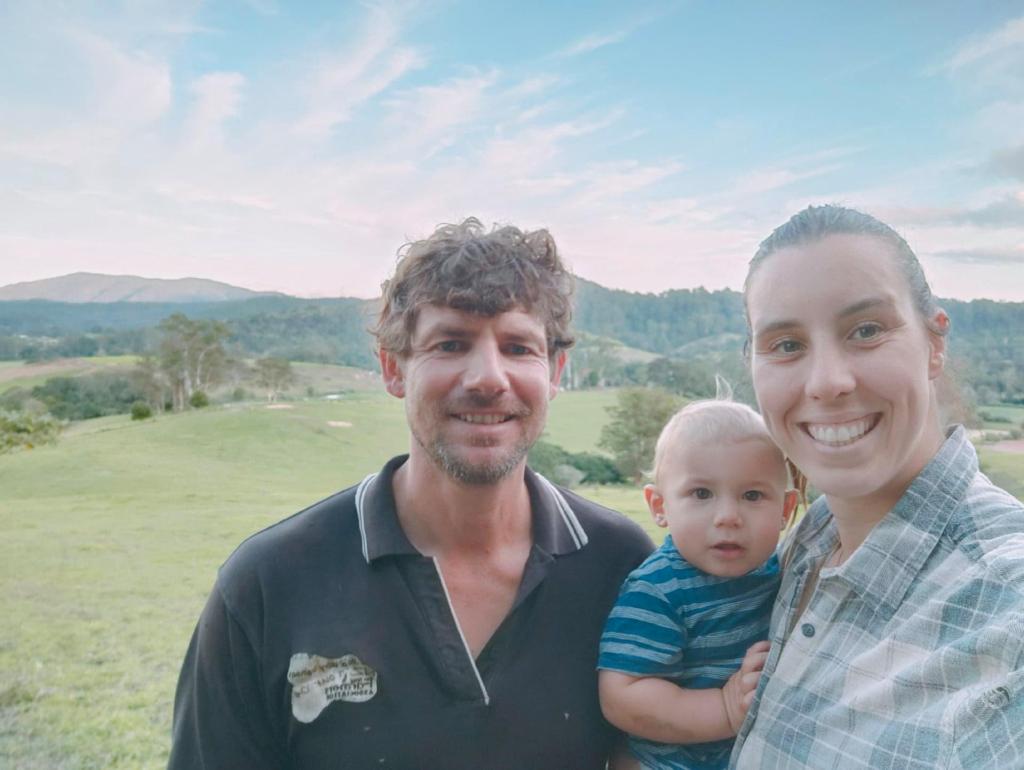Farm purchase the reward for investment in cattle
Breeding extra dairy heifers and capitalising on demand for beef has helped one NSW dairy couple purchase a farm. Young farmers Ben Clarke and Abbey Smeets will make move into farm ownership in November, after leasing a farm at Hannam Vale on the state’s mid-north coast.
Additional income from livestock sales bolstered the milk cheques, from their 300 cow year-round dairy herd. But the impetus for using ABS sexed genetic product Sexcel™ – the key to breeding additional heifers – was never to sell livestock. “I used Sexcel to make sure I had control of my replacements,” Ben said. “Make sure we would have enough numbers. In the past with conventional semen, we had a bit of bad luck getting too many bulls. We use Sexcel now to make sure we maintain replacement numbers every year.”

Soon, Ben and Abbey found 120 replacements a year were too many for their business, and they looked elsewhere for markets. “We had our surplus number of heifers out in the central west (NSW) in quarantine for six months, then they went onto the export market,” Ben said. “Also, our Wagyu business allowed us to generate extra income too.”
Using Sexcel to breed additional dairy heifers and Wagyu semen to supply animals to a beef-dairy contract has not only broadened Ben and Abbey’s revenue streams, but it has helped mitigate costs. “Wagyu semen at only $10 a pop brings back the average semen cost to $25-$30 a straw,” Ben said. “Each year we would budget on $40,000 for reproduction and we’d hit that all the time. We don’t do as much budgeting now as the numbers always stack up.”
Better genetic and performing cows tend to be joined to Sexcel, but the health of each animal and the weather conditions also play a role in breeding decisions. “With the cows, I find we get the best (breeding) results from May through to mid-October because up here it can be 30 to 35 degrees (Celsius) at other times and the humidity might be 90 percent,” he said. “During winter what a cow gets joined to, depends on how she calves down. Each year is a different year for each cow. If she has no transition issues, has a good record of getting in calf, she will get Sexcel. The better cows get Sexcel more than other cows.”
During the cooler months, Ben said Sexcel has had the same conception rate as conventional semen in his system. Ben and Abbey’s year-round calving system has an annual pregnancy rate of 20-40 percent. The pregnancy rate is a measurement of how many cows are eligible for joining in 21 days – the heat detection rate – multiplied by the conception rate. It’s a common measurement of reproduction in year-round calving systems and is used extensively in the US.
ABS Technical and Genetic Services Representative Matt Aikenhead said Ben and Abbey’s reproduction rates are surpassing expectations within their system and climate. “Summer in a year-round calving herd can be challenging for joining,” he said. “Ben and Abbey’s results have increased in recent years and are exceeding targets set by Dr. Luke Ingenhoff from the University of NSW Livestock Veterinary Teaching and Research Unit at the Sydney School of Veterinary Science. These targets reflect what’s expected in these conditions and production systems.”
Ben and Abbey’s dairy heifers are also joined to Sexcel and achieve a conception rate of 50-80 percent, using a 12-day synchronisation CIDR program. Cows that haven’t cycled at 55 days in milk also go into an Ovsynch program. Ben and Abbey’s herd averages 25-26 litres a day with a 3.1 percent protein and 3.8 percent fat.
When it comes to breeding, the couple looks at the Balanced Performance Index (BPI), an economic index blending production, type and health traits for Australian conditions, to make decisions about bulls. They also focus on dairy strength and calving ease. “We keep it pretty simple,” Ben said. “We like a system that’s low maintenance and we select bulls that get cows in calf, that’s how you make money at the end of the day.”
Building herd numbers and making the most of his investment in livestock has underpinned Ben’s farming career. Working in dairy, he’s managed farms and stepped up to run a larger operation when he moved to the mid-north coast of NSW. During this time, he built his herd numbers and leased these animals out of other farmers. His story is a well-trodden path to farm ownership and proves the age-old industry belief that it’s the cows that truly underpin on-farm success.
